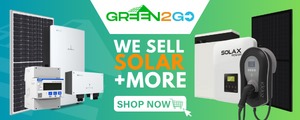-
Pro's OnlyElectricians Arms Electrician Talk How to Access The Arms Domestic Electrician Industrial Electricians Wiring, Theories, Regulations Engineering Chat Periodic Testing Problems Electricians Downloads Commercial Electricians Security (Access-Only) Access Private Area Business Related Advice Certification Schemes Electrical & PAT Testing
You are using an out of date browser. It may not display this or other websites correctly.
You should upgrade or use an alternative browser.
You should upgrade or use an alternative browser.
Although purpose-made motors and generators differ in detail, fundamentally they are identical machines that can serve each other's roles up to a point. What determines whether a machine works as one or the other is where the power is put in (mechanically or electrically) and taken out. Connect a machine to the grid and attach a brake, and it will run as a motor converting electrical power to mechanical. Replace the brake with a Diesel engine and the same machine will run as a generator.
A phase converter has multiple windings and does both at once. The winding energised by the single-phase supply receives power and functions as a motor, turning the rotor. The rotation causes the non-energised windings to function as a generator, from which current (and hence power) is delivered to the load. Part of the load power is converted from electrical to mechanical and back to electrical. The phase relationships of the three output phases are created by the mechanical positions of the windings relative to the rotating flux vector in the converter, just as in a mechanically-driven generator.
That is true as far as real power flow is concerned. There are many subtleties and complexities about phase converters due to the reactive power flows, but you will need some AC circuit theory knowledge to analyse those and the functions of the capacitors in a practical converter setup.
A phase converter has multiple windings and does both at once. The winding energised by the single-phase supply receives power and functions as a motor, turning the rotor. The rotation causes the non-energised windings to function as a generator, from which current (and hence power) is delivered to the load. Part of the load power is converted from electrical to mechanical and back to electrical. The phase relationships of the three output phases are created by the mechanical positions of the windings relative to the rotating flux vector in the converter, just as in a mechanically-driven generator.
That is true as far as real power flow is concerned. There are many subtleties and complexities about phase converters due to the reactive power flows, but you will need some AC circuit theory knowledge to analyse those and the functions of the capacitors in a practical converter setup.
I understand much better now,but do the capacitors in parallel with the none energised windings increase voltage the to same value of the single phase supply (230v) so you get 415v phase to phase at the motor output.Although purpose-made motors and generators differ in detail, fundamentally they are identical machines that can serve each other's roles up to a point. What determines whether a machine works as one or the other is where the power is put in (mechanically or electrically) and taken out. Connect a machine to the grid and attach a brake, and it will run as a motor converting electrical power to mechanical. Replace the brake with a Diesel engine and the same machine will run as a generator.
A phase converter has multiple windings and does both at once. The winding energised by the single-phase supply receives power and functions as a motor, turning the rotor. The rotation causes the non-energised windings to function as a generator, from which current (and hence power) is delivered to the load. Part of the load power is converted from electrical to mechanical and back to electrical. The phase relationships of the three output phases are created by the mechanical positions of the windings relative to the rotating flux vector in the converter, just as in a mechanically-driven generator.
That is true as far as real power flow is concerned. There are many subtleties and complexities about phase converters due to the reactive power flows, but you will need some AC circuit theory knowledge to analyse those and the functions of the capacitors in a practical converter setup.
They provide excitation current for the converter. An induction machine driven as a generator won't generate in isolation, because there is no source of excitation power to set up the magnetic flux and hence rotor current. When connected to an AC supply network the machine draws magnetising vars from the network, while delivering in-phase real power watts back to the network.
For an induction generator working as a stand-alone, the magnetising vars can instead come from capacitors connected across the output, which produce a current that leads the stator voltage. For the rotary phase converter the excitation provided by the supply is not equal on all phases, hence an asymmetric arrangement of capacitors is used to compensate for this and provide excitation that gives as near a balanced and correctly-phased output as possible.
For an induction generator working as a stand-alone, the magnetising vars can instead come from capacitors connected across the output, which produce a current that leads the stator voltage. For the rotary phase converter the excitation provided by the supply is not equal on all phases, hence an asymmetric arrangement of capacitors is used to compensate for this and provide excitation that gives as near a balanced and correctly-phased output as possible.
Thank you for sharing your knowledge with me.They provide excitation current for the converter. An induction machine driven as a generator won't generate in isolation, because there is no source of excitation power to set up the magnetic flux and hence rotor current. When connected to an AC supply network the machine draws magnetising vars from the network, while delivering in-phase real power watts back to the network.
For an induction generator working as a stand-alone, the magnetising vars can instead come from capacitors connected across the output, which produce a current that leads the stator voltage. For the rotary phase converter the excitation provided by the supply is not equal on all phases, hence an asymmetric arrangement of capacitors is used to compensate for this and provide excitation that gives as near a balanced and correctly-phased output as possible.
Although purpose-made motors and generators differ in detail, fundamentally they are identical machines that can serve each other's roles up to a point. What determines whether a machine works as one or the other is where the power is put in (mechanically or electrically) and taken out. Connect a machine to the grid and attach a brake, and it will run as a motor converting electrical power to mechanical. Replace the brake with a Diesel engine and the same machine will run as a generator.
A phase converter has multiple windings and does both at once. The winding energised by the single-phase supply receives power and functions as a motor, turning the rotor. The rotation causes the non-energised windings to function as a generator, from which current (and hence power) is delivered to the load. Part of the load power is converted from electrical to mechanical and back to electrical. The phase relationships of the three output phases are created by the mechanical positions of the windings relative to the rotating flux vector in the converter, just as in a mechanically-driven generator.
That is true as far as real power flow is concerned. There are many subtleties and complexities about phase converters due to the reactive power flows, but you will need some AC circuit theory knowledge to analyse those and the functions of the capacitors in a practical converter setup.
Similar threads
- Replies
- 14
- Views
- 443
Best EV Chargers by Electrical2Go! The official electric vehicle charger supplier.
OFFICIAL SPONSORS








These Official Forum Sponsors May Provide Discounts to Regular Forum Members - If you would like to sponsor us then CLICK HERE and post a thread with who you are, and we'll send you some stats etc
Advert
Thread Information
- Title
- Can someone once and forall tell me what a capacitor does in an AC circuit?Thanks.
- Prefix
- N/A
- Forum
- UK Electrical Forum
- Replies
- 21
- Unsolved
- --
Advert
Advert
TrueNAS JBOD Storage Server
-
-
Understanding TrueNAS JBOD Servers: A Comprehensive Guide
- Started by Dan
- Replies: 8
-
